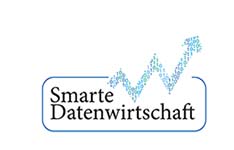HAPTIK
Tradability of physical goods with tokens in consortium networks
Application industry: Logistics, transport and traffic; trade
Technology area: Blockchain/distributed ledger technology
HAPTIK is developing a platform based on distributed ledger technology which makes it possible to replace analogue bills of lading with their digital equivalent. The solution promises considerable time and cost savings in merchant shipping.
The baseline
Maritime shipping accounts for the lion’s share of global freight transport. Numerous documents are used for processing; the bill of lading (B/L) is considered to be the most important one. This traditional paper forms the basis for the letter of credit business, an option for secured export financing for both buyer and seller. Up to now, the B/L in paper form passes through the hands of all stakeholders. This analogue process is very time-consuming and, if things go wrong, it may take longer than the actual transport.
The project goal
The goal of HAPTIK is to develop a platform that enables the generation and trading of bills of lading with digital tokens. The tokens represent real values and function as an electronic B/L. Distributed ledger technology (blockchain) ensures that the exchange on the platform always remains traceable and unchangeable . In addition to trading partners, government institutions and authorities, such as customs or port authorities, can also be included in the blockchain. The platform is designed to be application-neutral and hence serves as a standard for any form of token-based trading. In this way, HAPTIK aims to create the basis for the international standardization of electronic transport documents. All stakeholders in the transport sector, both private and official, are therefore involved in the development process. By providing legal support during the developing process, it is furthermore ensured that the software meets the legal requirements.
Practical application
HAPTIK is intended to significantly speed up global merchant shipping and to, therefore, make it more cost-efficient. The digitalization of the bill of lading is only the first step; ultimately, it should be possible to replace every transport-related document with its equivalent electronic counterpart.
Term: 1 January 2019 to 31 March 2022
Consortium: Carl von Ossietzky University of Oldenburg (lead member), Offis e. V., Schenker AG
Contact:
Univ.-Prof. Dr.-Ing. habil. Jorge Marx Gómez
Carl von Ossietzky Universität Oldenburg
E-Mail: jorge.marx.gomez@uni-oldenburg
Website: www.haptik.io
- Recommend this page:
- Print view
